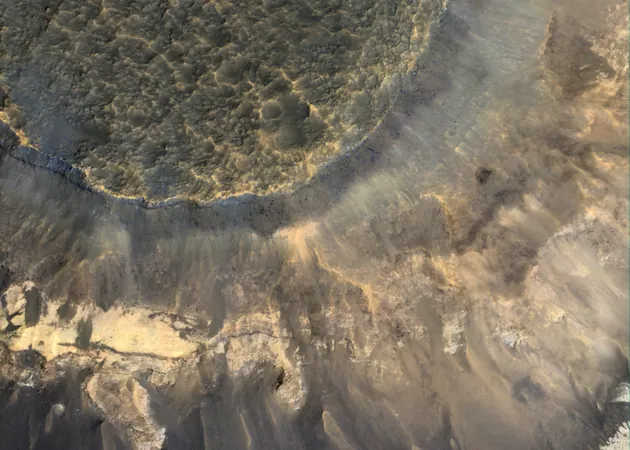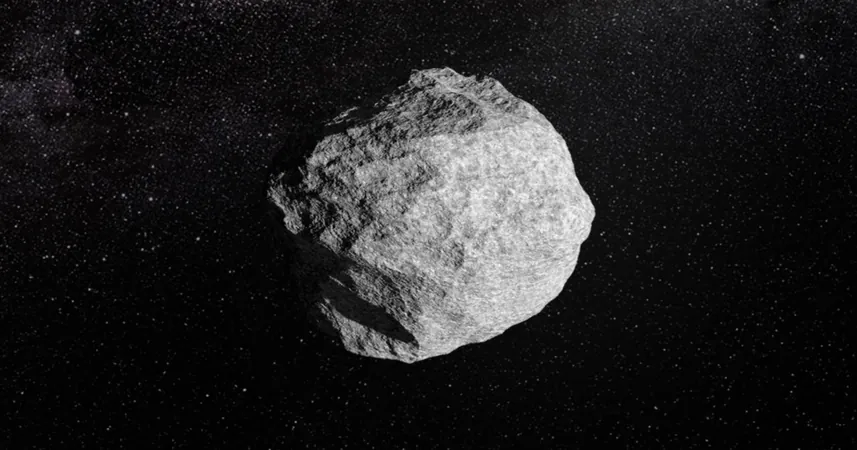
Did Ancient Life Thrive in Mars' Thick Clay Layers? Discover the Secrets of the Red Planet!
2025-06-16
Author: Olivia
Mars isn't just a barren landscape; it hides massive layers of clay, some stretching hundreds of feet deep! These intriguing formations require water to develop, making them prime targets for scientists on the hunt for hints of past extraterrestrial life.
In an exciting breakthrough published in Nature Astronomy, researchers from The University of Texas at Austin revealed that these clay layers likely formed close to ancient bodies of standing water, akin to lakes and rivers that were prevalent billions of years ago. This setting could have provided the perfect cocktail of minerals and a calm environment, crucial for the emergence of life.
"These areas are rich in water and boast stable terrain with minimal geological upheaval," says lead author Rhianna Moore, highlighting how such stability could foster habitability for extended periods.
Conducted under the umbrella of UT’s Center for Planetary Systems Habitability, this study digs deep into the prerequisites for life on both Earth and other celestial bodies. Moore, who’s now contributing to NASA’s Artemis mission, pointed out that the layers of thick clay might hide clues to an ancient, unstable water and carbon cycle on Mars, which could explain the absence of carbonate rocks found on Earth.
Billions of years ago, Mars was a lush, aquatic paradise with lakes and rivers carving its surface. However, prior to this study, the environments that spawned these clay deposits remained largely a mystery.
Using data from NASA's Mars Reconnaissance Orbiter, Moore examined 150 identified clay deposits. She discovered that most clays aggregated at low elevations near ancient lake beds but shied away from fast-flowing drainage regions. This interplay of chemical stability and erosion was pivotal in ensuring the preservation of these ancient materials.
Tim Goudge, co-author and assistant professor at the Jackson School, noted the parallels between Martian and Earth environments, stating, "Just like on Earth, clay-rich areas reflect humid zones with minimal erosion, suggesting a similar story on Mars."
Yet, ancient Mars was anything but a mirror image of Earth. Unlike our planet, where active tectonics renew surfaces and balance atmospheric chemistry, Mars remains geologically stagnant. The volcanic activity on the Red Planet pumped CO2 into the atmosphere without the refreshing cycle of new, reactive rock, causing a prolonged greenhouse effect—potentially a recipe for wetter conditions that contributed to clay formation.
Crucially, this ceased rock cycling may also explain the scarcity of carbonates. Rather than leaching into the environment and forming carbonates, it seems that ongoing clay development consumed precious water resources and locked away chemical remnants, preventing the necessary reactions for carbonate formation.
Moore concludes, "This might just be another piece of the puzzle explaining Mars’ puzzling lack of predicted carbonates." This groundbreaking research was made possible through funding from NASA and the Canadian Institute for Advanced Research, revealing that Mars still has many secrets waiting to be uncovered!









 Brasil (PT)
Brasil (PT)
 Canada (EN)
Canada (EN)
 Chile (ES)
Chile (ES)
 Česko (CS)
Česko (CS)
 대한민국 (KO)
대한민국 (KO)
 España (ES)
España (ES)
 France (FR)
France (FR)
 Hong Kong (EN)
Hong Kong (EN)
 Italia (IT)
Italia (IT)
 日本 (JA)
日本 (JA)
 Magyarország (HU)
Magyarország (HU)
 Norge (NO)
Norge (NO)
 Polska (PL)
Polska (PL)
 Schweiz (DE)
Schweiz (DE)
 Singapore (EN)
Singapore (EN)
 Sverige (SV)
Sverige (SV)
 Suomi (FI)
Suomi (FI)
 Türkiye (TR)
Türkiye (TR)
 الإمارات العربية المتحدة (AR)
الإمارات العربية المتحدة (AR)